How 'Tales From the Hood' Went From Cult Hit to Hardcore Halloween Classic
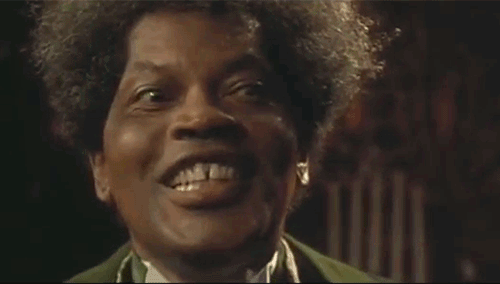
1995 was a horrific year to be a horror fan. With Wes Craven’s genre-revitalizing Scream still a year away from release, viewers were stuck seeking scares from such lackluster titles as the Craven-directed Vampire in Brooklyn and yet another Halloween sequel. Those movies have faded into obscurity, but at least one alumnus from the Horror Class of ’95 has managed to take root in the minds of subsequent generations. We’re talking about Tales From the Hood, the cult anthology film made by and for underserved African American horror fans. The brainchild of writer/director Rusty Cundieff and his co-writer, Darin Scott — Spike Lee also lent his support as an executive producer — Tales distinguished itself from that year’s underwhelming horror fare by commenting directly on social issues that remain vitally important within the black community.
If anything, the four stories that compromise Tales feel more relevant twenty years later. Take “Rogue Cop Revelation,” in which a trio of corrupt, racist cops mercilessly beat an innocent black motorist — and then murder, him lest their crime be uncovered. (Fortunately, the dead man’s spirit returns to mete out the justice his killers otherwise avoided.) “Boys Do Get Bruised,” meanwhile, delves into the mind of a young boy who’s being physically abused by his mother’s boyfriend. That’s followed by “KKK Comeuppance,” which casts Corbin Bensen as an ambitious politician with a penchant for making racially charged comments…comments that upset the souls of the long-dead slaves that once inhabited the plantation home that serves as his campaign office. (As he comes to learn, their souls still do inhabit the house, in the form of tiny, but deadly dolls.)
And, finally, there’s “Hard-Core Convert,” which plays like the horror movie response to then-popular gangland movies like Boyz n the Hood and Menace II Society, presenting a Clockwork Orange-style scenario where a gang member is “cured” of his addiction to violence. All of these stories are introduced by a funeral home loon, played with daffy, demonic relish by Clarence Williams III. Yahoo Movie spoke with Cundieff about the enduring timeliness of Tales From the Hood and why it nearly got slapped with an X rating.
How did the idea for Tales take root in your mind?
I had written a stage play called Black Horror Show, and I talked to Darin about how to proceed with a black horror movie. The title, Tales From the Hood, seemed to be the automatic way to put across the idea that it was an anthology, and also related to the black experience, whatever that was at the time. I wanted to make sure that the there was something socially relevant within each piece, and also create a situation where the horror and supernatural forces were things that you were rooting for as opposed to against. We didn’t have young co-eds who you wanted to stay alive. All the humans in Tales from the Hood do bad things and the supernatural is their comeuppance.
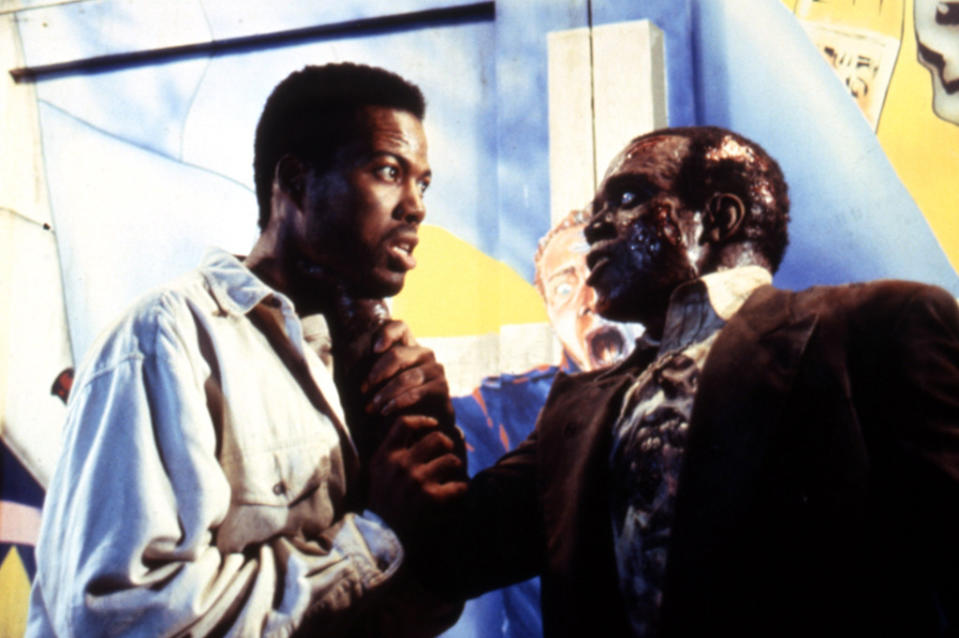
Anthony Griffith and Tom Wright in ‘Rogue Cop Revelation,’ one of the four stories in ‘Tales from the Hood’ (Photo: Everett)
Each tale tackles a major issue like police brutality or domestic abuse. Did you start with the issue and then build a story around that or start with the story and work the issue into it?
We started with the problem and then figured out how to address it in a horror format. Something I was concerned about was not pimping the issue and just using it for a cheap joke or scare. You hope you’re contributing something of value. Over the years, I’ve heard from gang members who say the film made them re-think being in a gang, which is great. And at one of our early screenings, there was a woman who ran a safehouse for women [escaping] the threat of domestic abuse. I asked her if we treated the subject matter seriously enough and se said, “This is cathartic for a lot of women going through this.” It was nice to hear that from her.
It’s both impressive and depressing that, twenty years later, Tales still feels so timely and relevant. The events of the first story, “Rogue Cop Revelation” could almost be ripped directly from today’s headlines.
That story in particular upset our white audience. We had a few test screenings prior to release where we had a fairly mixed audience, and in the conversations at the end, a lot of [white viewers] did not believe that this was an issue, and felt we were unfairly painting the officers with a broad brush of evil. At the time, I don’t think those stories got the headlines they get now, mainly because there weren’t cameras everywhere. But it was something known within the African American community. The stories were passed on from one person to another, and you’d hear about it that way. It’s still a valid piece today and remains pretty powerful, maybe even moreso than it was then.
In the second segment, “Boys Do Get Bruised,” David Alan Grier plays the abusive boyfriend, which definitely ran counter to his In Living Color public image at the time. Was that your reason for casting him?
I had done stand-up comedy, so I knew David from that world and I also knew he had parts of him that didn’t get tapped in the broader comedic stuff he did. To take the guy known for doing “Men on Film” and put him in a role that’s 180 degrees the other direction from that really added to the segment. The MPAA originally wanted to give us an X rating because of the scene where David beats the boy’s mother [played by Paula Jai Parker], so we had to shorten it.
Their argument was that it was too violent. [But] for me the point was that, in test screenings, I would see that the initial response of some viewers was laughter. It was only after it went on that they would be forced to deal with the reality of it. Especially with younger audiences or audiences who had lived through this kind of experience, [laughter] was a defense mechanism. No one wants to feel the emotion [of the beating], so they try to block it and remain cool by making a joke about it. Only after a certain amount of time does it break through. I think the scene works anyway, but [the longer version] would have worked better.
I feel like every horror anthology needs its “killer doll” segment, as a nod to Trilogy of Terror. And “KKK Comeuppance” seems to tick off that box.
That one was absolutely informed by Trilogy of Terror, which was probably the scariest thing I saw as a child. And it was on network television [in 1975], which was amazing! So we started there and put it in a social context. Even back then, there were examples of politicians using race to divide [the public] and create a fanbase. We took that idea and put these dolls in the middle of it.
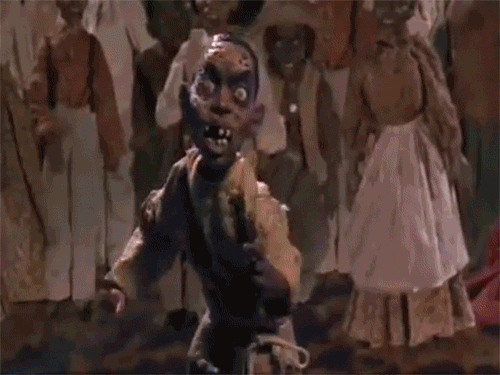
Corbin Bensen gets all dolled up in ‘Tales From the Hood’
Originally, we didn’t have the scene at the end where the dolls attack Corbin. We wanted it, but couldn’t afford it. Instead, the story ended with people coming in and finding him hung, and we don’t know whether it was these dolls or if he’s crazy. Test audiences didn’t find that to be very satisfying, so we went back and re-shot it with [special effects artists], the Chiodo Brothers, doing the stop-motion animation of the dolls. Nowadays, that would be done with CGI, but I like the feel of stop motion. It’s like the Quay Brothers: these weird things that shouldn’t be moving, but somehow are.
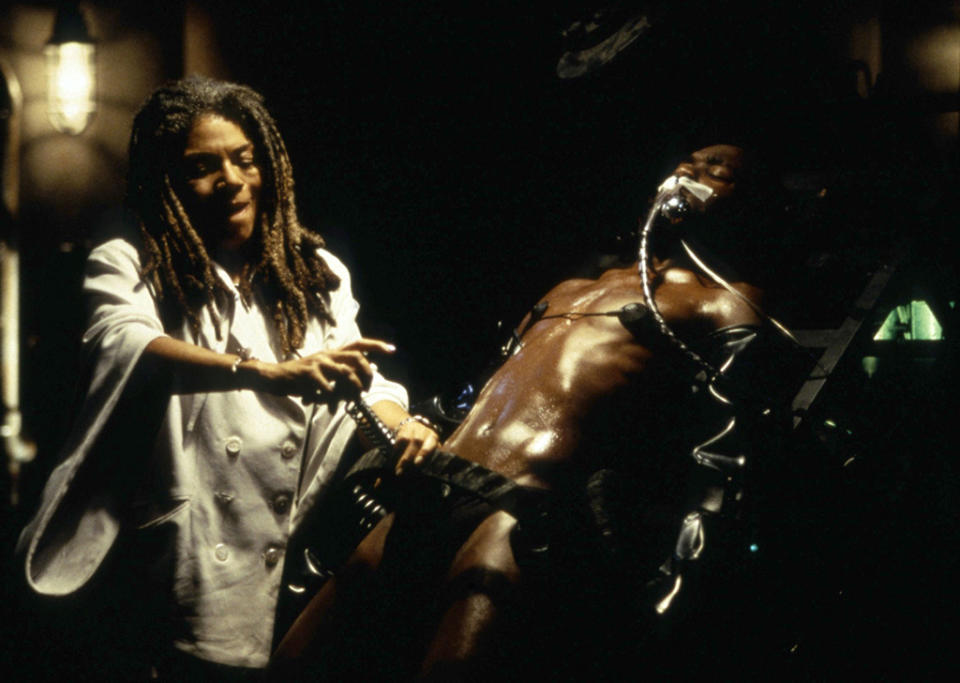
Rosalind Cash and Lamont Bentley in ‘Hard-Core Convert,’ the final story from ‘Tales from the Hood’ (Photo: Everett Collection)
The fourth segment, “Hard-Core Convert,” features the movie’s scariest and most racially charged imagery: a montage of old photographs depicting public lynchings and beatings. It’s all the more horrific when you realize they are actual existing prints.
My wife did the research for that montage, and put them in a book. I still have it. It’s a book of terror, really. The idea that so much of this was caught makes you realize there’s how much more wasn’t caught. It’s not like today where anyone can take a picture anytime they want; back then, practically nothing was photographed if it wasn’t an important event. To look back at all those images we have is to realize that what wasn’t shown must have been ten times worse.
Clarence Williams III is a great emcee for the anthology. Was he your first choice for the part?
I don’t know that he had another choice! [Laughs] When Clarence’s name came up, it was like “Yeah, of course we want him.” We were fortunate to get him; if you’re in the right place at the right time, you can get a person with all this tremendous talent who hasn’t been in the spotlight for a little bit. Interestingly, the day we shot his transformation in the Devil, some of the studio executives visited the set to see what we were up to. We showed them footage of Clarence’s transformation and they said, “How did you guys get special effects already?” We said, “There’s no special effects yet. That’s just Clarence acting!” He did such an incredible job that people thought we had put special effects into the raw footage. It’s just a talented actor doing some incredible work.
At what point did Spike Lee get involved as a producer?
I attended a screening for one of his movies and he asked what I was up to. I mentioned Tales From the Hood and he said, “I want to produce it! Send me the script!” We were only halfway through it at that point, so we rushed to finish it and he helped us set it up [at the studio]. I didn’t sense that [Spike] had a particular love of horror; for him, it had to have some resonance to his cultural perspective and life as a black filmmaker. He was a fantastic advocate throughout the process. [He] helped us win some battles with the studio here and there. He helped us get more money that we ever would have gotten to make it on our own, that’s for sure.
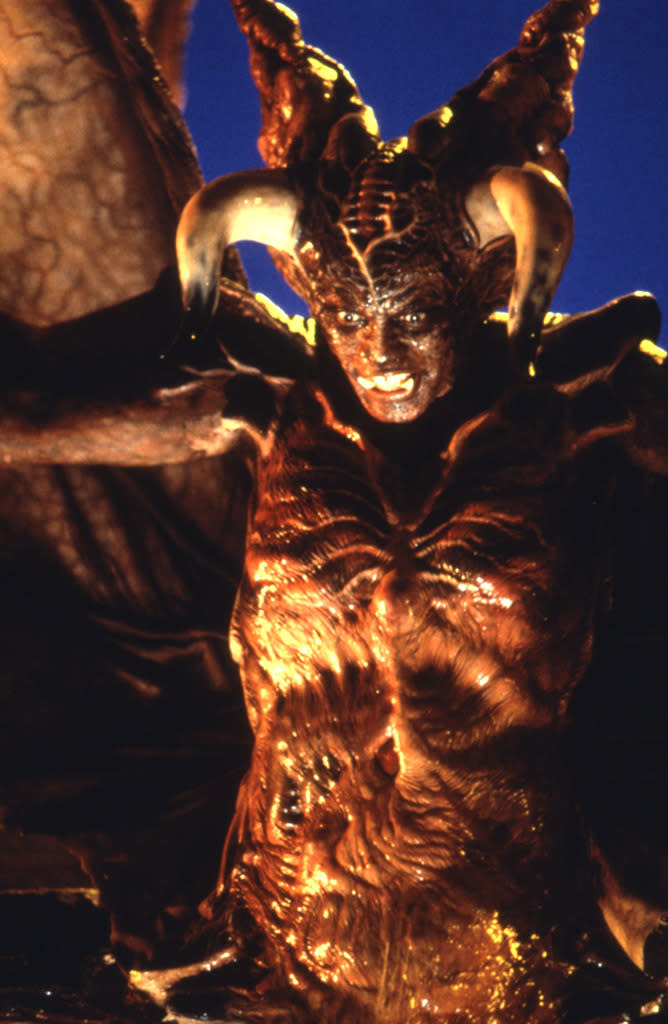
Clarence Williams III after making his big transformation in ‘Tales from the Hood’ (Photo: Everett Collection)
Tales has a cult following today, but do you feel it was handled properly at the time?
[The studio] didn’t get it. They were really afraid of marketing the social aspects of the movie. If you look at the trailers, you get no sense that there’s any social import in the film at all, and Darin and myself both felt that’s what makes the movie unique. I think [the marketing] was a detriment to the film and the box office. I’ve had so many people who have come up to me after it was released saying, “Had I known what it was about, I would have been excited to go, but it just looked stupid.” And I go, “Yeah, we know.”
Even though horror may be the most diverse genre in terms of audience appeal, there’s a noticeable uniformity to the talent working behind the camera. Twenty years after Tales, you’re still one of the few black filmmakers to direct a studio-backed horror movie.
You can say that about all of Hollywood, from a behind-the-camera standpoint. I do think it’s changing some. I hope it is. I know that the network TV One is doing some horror-themed programming that relates to African American audiences. Bringing different cultural experiences to the genre is a good thing, because it can get stale really fast.
I had a hard time tracking down a copy of Tales From the Hood to revisit before our chat. It’s not streaming anywhere and the only available DVD dates back to 1998. What’s the current licensing situation?
Tales is with Universal in some kind of way. We’ve tried to approach them about doing a Tales 2, and they don’t seem to care that much about it. So we’ve talked amongst ourselves about doing another horror anthology that wouldn’t be Tales, but would have the same mixture of social issues with scares and humor. People have actually called the studio asking to screen Tales, but nobody can find a print. So if there’s a theater anywhere in the country that still has a print sitting on the shelf, please let us know! We’d be ecstatic to get it and make a Blu-ray.
How will the new version of Tales—or whatever it will be called—differ from the original film?
We’re hoping to broaden it beyond an African American perspective, but still have it relate to the black community. The idea will be that it’s still a blue-collar horror movie, like Tales. I look back at the movie now, and it moves a little slower than audiences today would expect something like this to move. I don’t know if people have the patience for the way we’re telling some of the stories. It’s like when you watch Cat on a Hot Tin Roof: It’s still good, but who is going to make the movie that way today?

